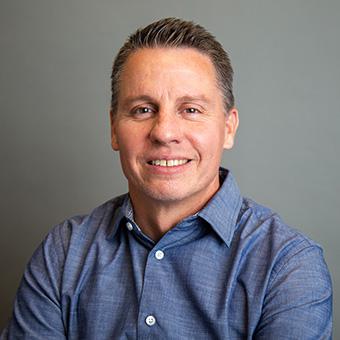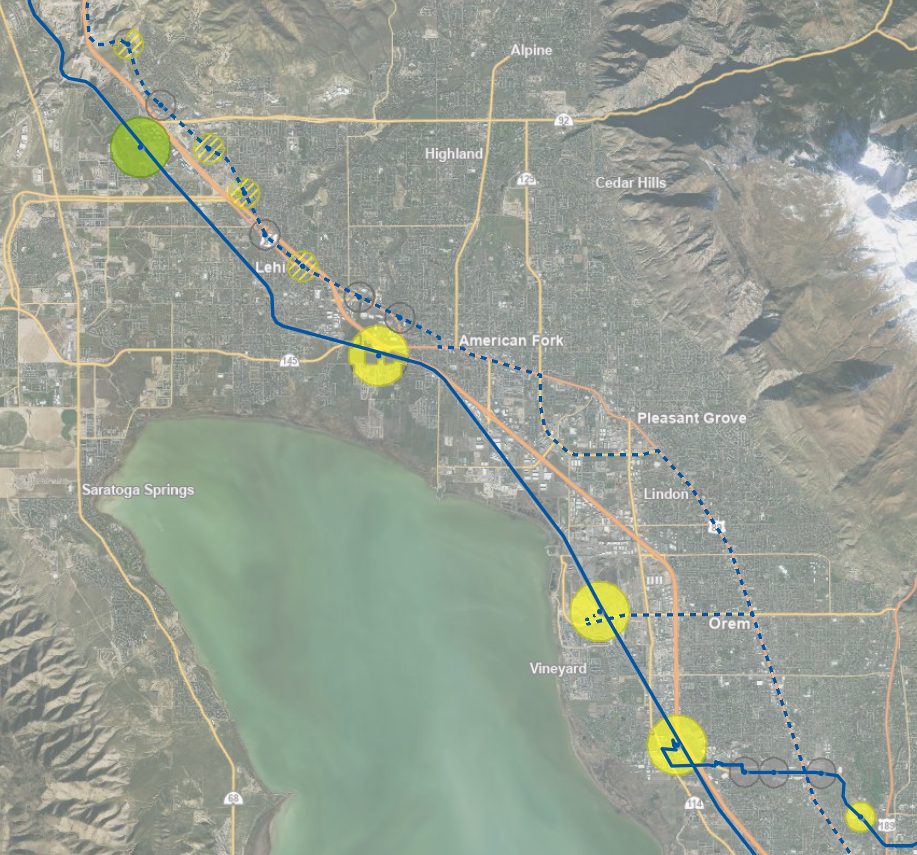SAP Objectives
Increase the availability and affordability of housing, including moderate income housing
Promote sustainable environmental conditions
Enhance access to opportunities (e.g., employment, education, recreation, and commerce
- Increase transportation choices and connections
SAP Related Resources
April 2022 ULCT Training
Presentation Meeting RecordingJuly 2022 SAP Certification & Technical Assistance Training
Presentation Meeting RecordingWhat We Do
RTP - Regional Transportation Plan
SAP - Station Area Plan Program
TAG - Technical Assistance to Governments Program
TIP - Funded Transportation Projects

Dan Wayne
Community Planning Manager
801-229-3824
dwayne@mountainland.org
SAP Technical Assistance
In partnership with the Governor’s Office of Economic Opportunity (GOEO), MAG provides technical consultant services to local governments for the development of SAPs in accordance with HB 462.
Active/Completed SAP Projects
| American Fork FrontRunner - This project will update the existing FrontRunner SAP and ensure that all HB 462 requirements have been met. The city previously established a transit oriented development zone with significant density requirements; however, much of the 1/2 mile station area is already committed to transportation right of ways (i.e., I-15 interchange, mainline I-15, rail line) and existing commercial development. Existing conditions will be updated; transportation and land use objectives will be reevaluated; public and community stakeholders will be engaged; and key actions and responsible parties needed to implement the plan will be mapped. Detailed work scope |
| Lehi Vistas at the Point - This station will serve as the northern transit gateway to Lehi City and the MAG region. The plan will be designed to accommodate either bus rapid transit (i.e., UVX) or light rail (i.e., TRAX) since the mode has not yet been determined. Access to this station is limited; however, there is substantial vacant land available for transit-oriented development and the Utah Southern Rail Trail provides a unique opportunity to link the station to the region's extensive trail network. The Flight Park State Recreation Area will also be considered. Detailed work scope |
| Lehi Hospital & 2100 N - This station will serve the city's growing high-tech and healthcare centers. The plan will be designed to accommodate either bus rapid transit (i.e., UVX) or light rail (i.e., TRAX) since the mode has not yet been determined. Both stations are major employment centers with substantial vacant land opportunities for continued growth, but feature large surface parking lots that are not conducive to a transit. This plan will help connect existing development and better orient future development to the transit station, enhance walkability, and developmetn strataegies for optimizing underutilized land. Detailed work scope |
| Lehi Historic State St./100 E Station - This station area plan is being combined with a Technical Assistance for Governments (TAG) Program award to for the Lehi Downtown Revitalization Plan Update since the two geographic planning boundaries partially overlap and will work in tandem to achieve overlapping objectives. It will be designed to accommodate either bus rapid transit (i.e., UVX) or light rail (i.e., TRAX) since the mode has not yet been determined. Key focus areas include first- and last-mile active transportation connections between the station and downtown as well as integration with the planned rail trail. Detailed work scope |
| Orem FrontRunner - Orem City’s previously-adopted station plan will be updated to meet all HB 462 requirements. Technical assistance provided to the city will allow for a robust community and stakeholder engagement process to explore opportunities and challenges and create a community-supported vision. Key objectives include coordination with UVU and context sensitive design that enhances surrounding established neighborhoods. Detailed work scope |
| Provo FrontRunner & UVX - The city is developing four SAPs covering six UVX stations and the Provo FrontRunner Station. Stations located in close proximity will be consolidated into one integrated SAP. For consistency and efficiency, the SAPs will be developed concurrently and have the same outline, and will allow Provo City and stakeholders to work together toward a common vision to improve transportation; increase housing availability and affordability; improve access for residents, commuters, and visitors; and promote sustainable transit and development patterns to meet the needs of Provo’s diverse and growing population. SAP technical assistance is specifically being used to update the existing conditions and administer a robust community engagement process. Detailed work scope |
| Spanish Fork FrontRunner - In coordination with the TAG-funded city-wide general plan land use update, the city will develop a Station Area Plan for the future FrontRunner Station. The city will work with UTA on siting the station and update the land use plan to orient land use toward the station and ensure convenient multimodal access to the station. Detailed work scope |
| Vineyard FrontRunner - The Vineyard FrontRunner Station opened for
service in August 2022. A land use plan for a new 350 acre downtown has been developed to
maximize future economic development and provide housing that is needed within Vineyard and the
region. This project will expand the station area plan boundaries from 350 acres (Downtown) on the westside of the FrontRunner rail line, to include
approximately 430 acres east of the railroad. The project will evaluate existing
environmental conditions; establish a road and trail network and design standards that effectively
connect to the UVU campus, Vineyard Downtown, and East Geneva; create a plan for land uses and access to
employment; and analyze future utility needs and environmental remediation. Detailed work scope |
SAP Policy Committee & SAP Certification Process
MAG and Wasatch Front Regional Council (WFRC) are responsible for reviewing and certifying that Station Area Plans, as prepared by respective cities, have met all statutory requirements of H.B. 462. The SAP Policy Committee has been established to oversee the certification process. The SAP Policy Committee is composed of mayors from each impacted city, a representative from the League of Utah Cities and Towns, and a representative from the Utah State Legislature.
Meetings and Agendas
Membership
SAP Policy Committee Meetings are held quarterly at MAG offices (586 East 800 North, Orem UT), from 9am to 10:30am. Records of past meetings are documented on the SAP Policy Committee webpage. Upcoming meeting dates and agendas are provided below.
- December 18, 2024 Meeting is cancelled due to no requests for SAP certification
- March 19, 2025 | Agenda TBD
- Deadline to submit SAP for certification: 2/3/25
- June 25, 2025 | Agenda TBD
- Deadline to submit SAP for certification: 5/12/25
- September 17, 2025 | Agenda TBD
- Deadline to submit SAP for certification: 8/4/25
- December 17, 2025 | Agenda TBD
- Deadline to submit SAP for certification: 11/3/25
- Chair, Mayor Mark Johnson, Lehi City
- Vice Chair, Mayor Bill Wright, Payson City
- Mayor Brad Frost, American Fork City
- Council Member LaNae Millett, Orem City
- Mayor Michelle Kaufusi, Provo City
- Mayor Matt Packard, Springville City
- Mayor Mike Mendenhall, Spanish Fork City
- Mayor Julie Fullmer, Vineyard City
- (Non-voting) Cameron Diehl, Utah League of Cities and Towns
- (Non-voting) Utah State Representative Kay Christofferson
Certification Process Resources
SAP Certification Policy and Applicant InstructionsSAP Certification ChecklistSAP Certification Workshop Presentation
